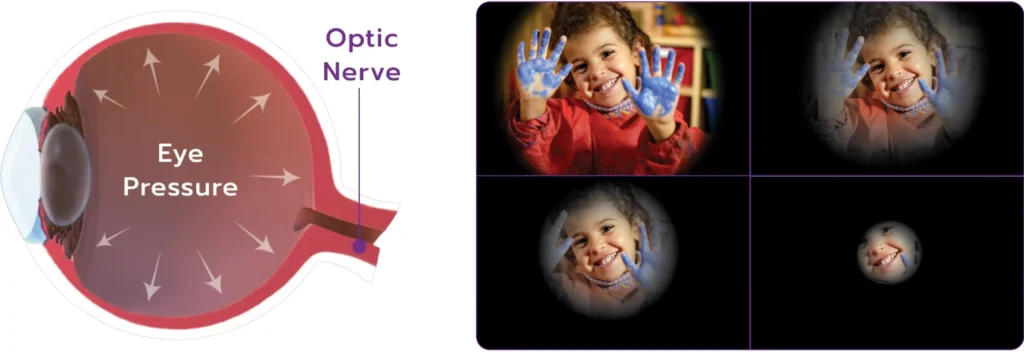What is Glaucoma?
HOW GLAUCOMA CAN IMPACT YOUR VISION
Glaucoma is a group of diseases that damage the eye’s optic nerve. The condition is generally not something you can feel, which may result in its going undiagnosed without proper checkups. As the condition develops, patients can experience increased eye pressure (even without noticing symptoms) when fluid in the eye accumulates and cannot drain naturally. If left undiagnosed or untreated, glaucoma can worsen over time and significantly disrupt your quality of life, resulting in vision impairment and even blindness.1 Though there is no cure for glaucoma, there are treatment options available to control it and slow disease progression.

How Common is Glaucoma?
If you’ve been living with glaucoma, you’re not alone. The condition affects millions of people around the world.
Did you know about 3 million Americans suffer from glaucoma?
-
US Prevalence2 3 million -
Worldwide Prevalence1 >57 million
Glaucoma Risk Factors
A major risk factor for developing glaucoma is increased eye pressure. Fluid inside the eye carries nutrients to the lens and cornea, then drains out through a natural filter called the trabecular meshwork. If the fluid cannot drain properly, it builds up, resulting in increased pressure inside the eye.
ADDITIONAL RISK FACTORS
- Advanced Age
- Severe Myopia (nearsightedness)
- Poor blood circulation
- Genetics (having another family member with glaucoma)

An Alternative Therapy Is Here
References
- Allison K, Patel D, Alabi O. Epidemiology of glaucoma: the past, present, and predictions for the future. Cureus. 2020;12(11):e11686.
- Centers for Disease Control and Prevention. Don’t let glaucoma steal your sight! November 24, 2020. Accessed September 9, 2022. https://www.cdc.gov/visionhealth/resources/features/glaucoma-awareness.html.